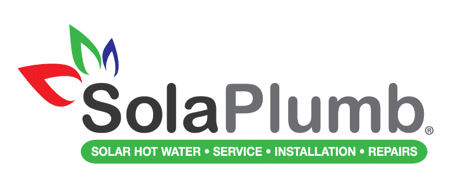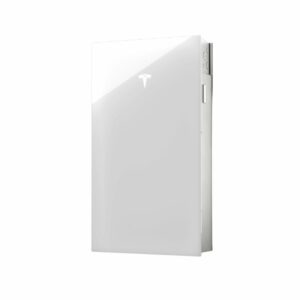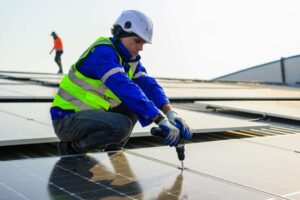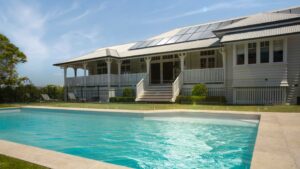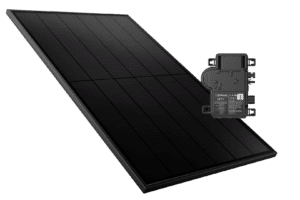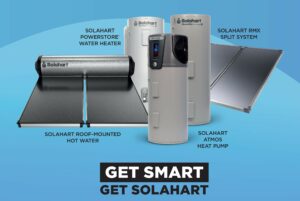In today’s world, as we seek to reduce our dependence on nonrenewable energy sources and strive for a greener, more sustainable future, solar power systems have emerged as a popular choice for homeowners. Many people are drawn to the idea of harnessing the sun’s energy to power their homes and reduce their environmental impact.
This article will serve as a comprehensive guide to help you understand the intricacies of solar power systems, ensuring you can make an informed decision and operate your system effectively. From understanding the basics of solar energy generation to maximising the efficiency of your system, we will explore everything you need to know to successfully run a solar power system in your home.
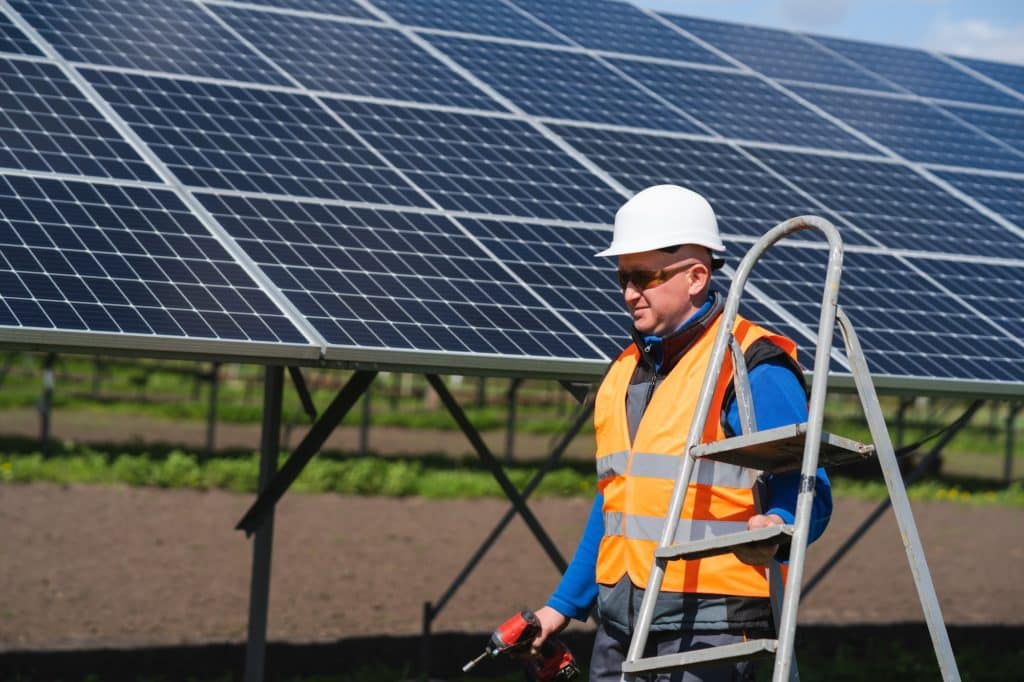
Understanding the Basics of Solar Power Systems
To effectively run a solar power system, it is crucial to grasp the fundamentals of how these systems work and the components involved. Solar power systems harness the sun’s energy and convert it into usable electricity for your home.
Let’s delve into the main components of a typical system and the role each plays in generating electricity.
Components Involved In A Solar Power System
- Photovoltaic (PV) panels: These panels capture sunlight and are the primary element in converting solar energy into electricity. Made of semiconducting materials like silicon, PV panels produce direct current (DC) electricity when sunlight hits their surface.
- Inverter: The inverter is responsible for converting the DC electricity generated by PV panels into alternating current (AC) electricity, which is used by most household appliances. Inverters are essential for making the energy produced by your solar power system compatible with your home’s electrical system.
- Battery storage: While not always included, battery storage systems store excess energy produced by the PV panels for later use. This energy can be used during times when the sun isn’t shining, such as during the night or on cloudy days, ensuring a continuous supply of electricity.
- Balance of system components: These include various supporting elements like wiring, mounting systems, and safety equipment. These components are essential for the proper functioning and safety of your solar power system.
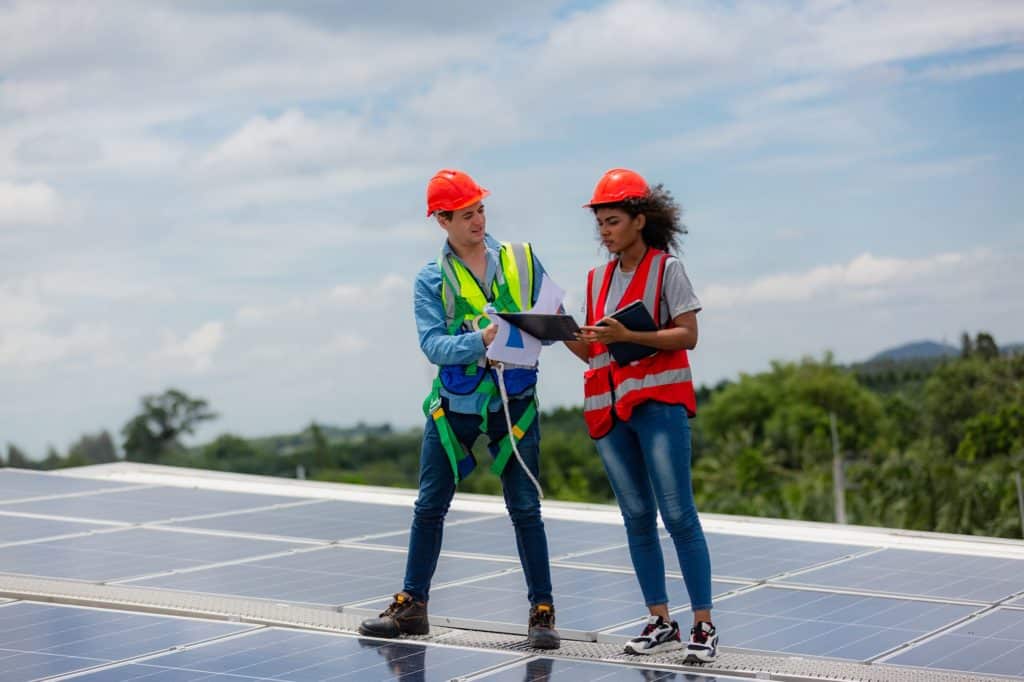
How Solar Power Systems Generate Electricity
The process of converting sunlight into usable energy starts when the sun’s rays hit the surface of the PV panels. The panels’ semiconducting materials generate DC electricity through a phenomenon known as the photovoltaic effect. This DC electricity is then converted into AC electricity by the inverter, which is compatible with your home’s electrical system and appliances. The AC electricity is either used immediately within your home, stored in battery storage systems, or in some cases, fed back into the grid.
Installation and Setup
Proper installation and setup are critical to the performance and efficiency of your solar power system. Ensuring that your system is designed and installed correctly will help you get the most out of your investment. Here’s an overview of the steps involved in the installation and setup process.
Site Assessment And System Design
- Determining the optimal placement of PV panels: A qualified CEC accredited solar designer will assess your property to identify the best location for the PV panels. Factors such as the direction of the roof, shading, and available space will be considered. Ideally, PV panels should be installed in a place that receives maximum sunlight throughout the day to ensure the highest energy generation.
- Calculating the required system size: The designer will also help you determine the appropriate size of your solar power system based on your energy needs and consumption patterns. This will involve analysing your energy bills, understanding your energy usage habits, and considering any future changes to your energy consumption.
Harnessing this incredible resource through a solar power system is not only a smart investment for your home but also a step towards a more sustainable future.
Professional Installation Process
- Ensuring proper mounting and wiring: Once the optimal location for your PV panels has been identified, a qualified CEC accredited installer will mount the panels on your roof or other suitable structures. Proper mounting is essential for the safety and performance of your system. The installer will also take care of the necessary wiring and connections to ensure that your solar power system is integrated seamlessly into your home’s electrical system.
- Obtaining necessary permits and inspections: Depending on your location, you may need to obtain permits and approvals from electrical authorities before installing a solar power system. A reputable solar installer will typically handle this process for you, ensuring that your system meets all local regulations and safety standards. After the installation is complete, a final inspection may be required to verify that your system is correctly installed and safe to operate.
The installation and setup of your solar power system are crucial steps that should be entrusted to experienced professionals. Proper planning and execution will set the stage for a well-functioning, efficient, and reliable solar power system that meets your energy needs for years to come.
Operating Your Solar Power System
Once your solar power system is installed and properly set up, it’s time to focus on operating and maintaining it to ensure optimal performance and longevity.
Here are some essential aspects to consider when operating your solar power system:
Monitoring And Maintaining System Performance
- Regular inspections and cleaning of PV panels: To keep your solar power system working at peak efficiency, it’s important to inspect and clean the PV panels regularly. Debris, dirt, and bird droppings can accumulate on the panels, reducing their energy production capabilities. Scheduling annual cleanings and inspections will help maintain the performance of your system and identify any potential issues before they escalate.
- Tracking energy production and consumption: Monitoring your system’s energy production and your home’s energy consumption can provide valuable insights into its performance. Many modern solar power systems come with monitoring software that allows you to track these metrics in real-time. By reviewing this data, you can identify trends, spot inefficiencies, and make adjustments to your energy usage habits if needed.

Maximising Energy Efficiency In Your Home
- Implementing energy-saving habits: To get the most out of your solar power system, it’s essential to adopt energy-saving habits. Simple actions like turning off lights when not in use, unplugging electronic devices, and using energy-efficient LED bulbs can help reduce your energy consumption and make your solar power system even more beneficial.
- Investing in energy-efficient appliances and devices: Upgrading to energy-efficient appliances and devices can further enhance the effectiveness of your solar power system. Look for products with the ENERGY STAR label, which signifies that they meet specific energy efficiency standards. These appliances and devices will help reduce your overall energy consumption, allowing your solar power system to cover a larger percentage of your energy needs.
Conclusion
Did you know that the sun emits enough energy in just one hour to power the entire world for a full year? Harnessing this incredible resource through a solar power system is not only a smart investment for your home but also a step towards a more sustainable future. Throughout this guide, we’ve explored the essential aspects of understanding, installing, and operating a solar power system.
As you consider making the switch to solar, remember that professional assistance is invaluable in ensuring a smooth and successful transition. Don’t hesitate to reach out to Solaplumb, a trusted and experienced partner in the solar industry, to guide you through the process and help you make the most of the sun’s abundant energy. Contact Solaplumb today and start your journey towards a greener, more energy-efficient home!
